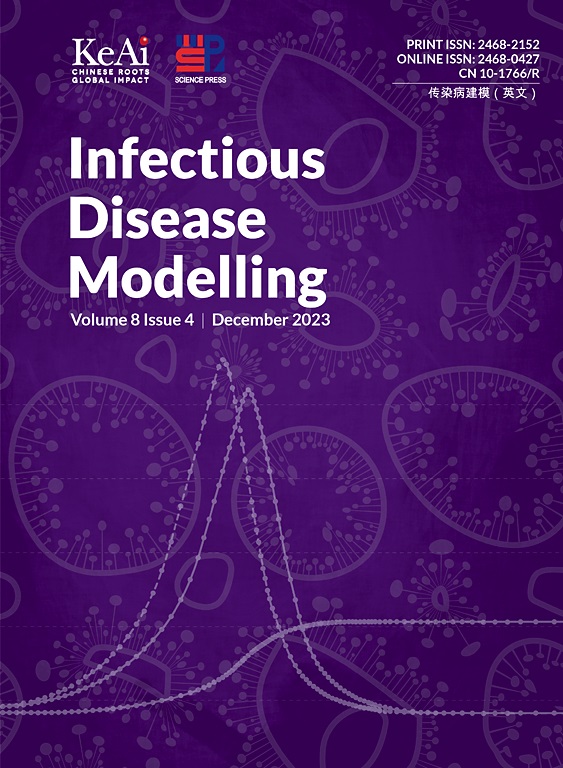基于生成智能体模型的分区模型参数推理的多方法研究
IF 2.5
3区 医学
Q1 Medicine
引用次数: 0
摘要
可以使用优化技术或贝叶斯技术将过程模型(如分隔SIR模型)校准为实际数据。要准确评估这些方法的性能,可以使用综合爆发数据。对于合成数据,关于数据生成过程的所有信息都是已知的,而当使用真实数据时,存在许多未知因素,例如漏报病例或真实参数值。我们建议使用基于智能体的模型来生成合成数据。校准使用不同代理接触结构创建的合成数据集可以为我们提供有关接触结构变化如何影响SIR模型参数的信息。我们比较了两种校准方法的结果:Nelder-Mead优化技术和HMC,贝叶斯技术。分析发现,当观察平均绝对误差、平均绝对缩放误差和相对均方根误差时,两种校准方法在精度方面表现相似。从模型参数来看,HMC比Nelder-Mead更能捕获地面真值参数。校正结果还表明,有效感染期对接触方式的变化和人群中易感个体的比例变化很敏感。在选择校准方法时,如果期望的结果是整体精度,那么任何一种方法都应该表现得同样好,但是,如果目的是理解和分析模型参数,则HMC是更好的选择。了解感染期等有效参数如何随着接触模式和疫苗接种率的变化而变化,可以为理解如何解释根据真实世界数据校准的参数(捕获隔离和疫苗接种)提供有价值的信息。本文章由计算机程序翻译,如有差异,请以英文原文为准。
A multi-method study evaluating the inference of compartmental model parameters from a generative agent-based model
Calibrating process models such as compartmental SIR Models to real data can be performed using either optimization or Bayesian techniques. To accurately assess the performance of these methods, synthetic outbreak data can be used. All information about the data generative process is known for synthetic data, while when using real data there are many unknowns such as under-reporting of cases or real parameter values. We propose using an agent-based model to generate synthetic data. Calibrating to synthetic datasets created using different agent contact structures can provide us with information on how changes in contact structures impact SIR model parameters. We compare results for two calibration methods: Nelder-Mead an optimization technique and HMC, a Bayesian technique. The analysis finds that the two calibration methods perform similar in terms of accuracy when looking at the Mean Absolute Error, Mean Absolute Scaled Error, and Relative Root Mean Squared Error. Looking at the model parameters, HMC is better able to capture the ground truth parameters then Nelder-Mead. The results of the calibration additionally show that the effective infectious period is sensitive to the changes in contact patterns and the proportion of susceptible individuals in the population. For choosing a calibration method, if overall accuracy is the desired outcome, either method should perform equally well, however, if the aim is to understand and analyse the model parameters HMC is a better choice. Understanding how the effective parameters such as the infectious period changes as contact patterns and vaccination rates change can provide valuable information in understanding how to interpret parameters calibrated from real world data that captures both isolation and vaccination.
求助全文
通过发布文献求助,成功后即可免费获取论文全文。
去求助
来源期刊

Infectious Disease Modelling
Mathematics-Applied Mathematics
CiteScore
17.00
自引率
3.40%
发文量
73
审稿时长
17 weeks
期刊介绍:
Infectious Disease Modelling is an open access journal that undergoes peer-review. Its main objective is to facilitate research that combines mathematical modelling, retrieval and analysis of infection disease data, and public health decision support. The journal actively encourages original research that improves this interface, as well as review articles that highlight innovative methodologies relevant to data collection, informatics, and policy making in the field of public health.
 求助内容:
求助内容: 应助结果提醒方式:
应助结果提醒方式:


